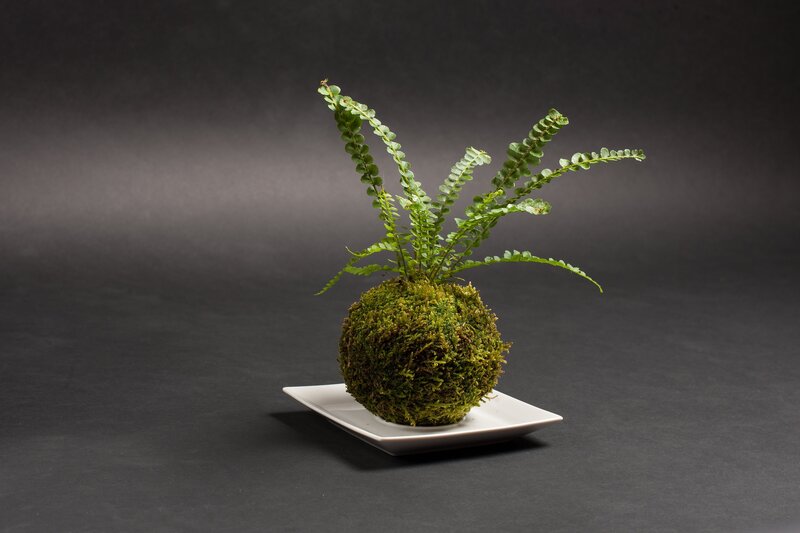Breathe Life into Your Garden: Starting a Makeover
Posted on 29/05/2025
Breathe Life into Your Garden: Starting a Makeover
If your outdoor space is looking tired and uninspiring, a thoughtfully planned garden makeover can breathe new life into your yard. Transforming your garden not only boosts curb appeal but also creates a sanctuary for relaxation, entertainment, and a thriving ecosystem. In this detailed guide, discover expert tips, step-by-step strategies, and creative ideas to help you kickstart your garden transformation and make your landscape come alive.
Why Begin a Garden Makeover?
Revamping your garden goes far beyond simple aesthetics. Starting a makeover in your outdoor space offers a host of benefits, both to your home and your wellbeing:
- Enhanced Curb Appeal: Increase property value and make a memorable first impression with a lush, vibrant landscape.
- Improved Functionality: Personalize your garden with new pathways, seating, or activity zones for the whole family.
- Eco-Friendly Benefits: Create habitats for birds, pollinators, and beneficial insects, while improving air and soil quality.
- Personal Satisfaction: Experience the mental and physical rewards of gardening and nurturing living things.
- Seasonal Interest: Add plants and features to ensure your garden looks stunning throughout the year.

Step 1: Assessing Your Existing Garden
Before making any changes, it's vital to observe and understand your current garden's strengths and weaknesses.
Survey Your Space
- What areas get sun and which stay shaded? Sunlight influences what plants will thrive.
- How is water draining? Is your garden prone to waterlogging or drought?
- Are there areas of heavy foot traffic or neglect? Noting high-activity spots can help with future design.
- What plants are currently growing? Identify what's thriving and what's struggling or overgrown.
List What Works--and What Doesn't
- Keep cherished features: A mature tree or charming pathway may be worth preserving.
- Remove or replace: Say goodbye to lifeless lawns, diseased shrubs, or dated hardscaping.
Step 2: Setting Your Garden Makeover Goals
Ask yourself: What do you want from your refreshed garden? Setting clear intentions ensures your efforts are meaningful and effective. Consider these popular goals:
- Creating Outdoor Living Areas: Install seating, dining spaces, or a fire pit for gatherings.
- Boosting Biodiversity: Attract pollinators with native plants and wildflowers.
- Low Maintenance Landscaping: Choose drought-tolerant, easy-care plants and materials.
- Year-Round Visual Interest: Mix perennials, evergreens, and ornamental grasses for ongoing appeal.
- Growing Your Own Food: Start a vegetable patch or integrate edibles like herbs, berries, or fruit trees.
Tip:
Sketch a simple plan--on paper or using garden design apps--to visualize changes and map out zones.
Step 3: Design Principles for a Transformative Garden
Balance and Harmony
- Repeat colors, shapes, or textures: This fosters unity and cohesiveness throughout your landscape.
- Vary plant heights and sizes: Layering plantings adds depth and drama.
Focal Points
A striking focal point such as a specimen tree, water feature, sculpture, or seating area draws the eye and anchors your design. Use focal points to create a sense of purpose and flow as you begin your garden transformation.
Paths and Movement
Well-planned paths and walkways invite exploration and structure your space. Curved paths tend to feel more natural and relaxed, while straight paths work for formal designs. Consider materials such as gravel, flagstone, or recycled bricks for a unique touch.
Step 4: Clearing, Cleaning, and Preparing the Soil
Declutter the Garden
- Remove debris: fallen branches, dead plants, outdated decorations.
- Clean or repair hardscape features: patios, walls, fences, or edging.
- Prune overgrown shrubs and remove invasive species.
Soil Preparation
- Test your soil: Most garden centers offer soil test kits to check pH and fertility.
- Amend as needed: Boost poor soil with compost, well-rotted manure, or other natural amendments.
- Mulch: Adding mulch conserves moisture, suppresses weeds, and feeds the soil as it breaks down.
Step 5: Choosing Plants for Your Garden Makeover
Right Plant, Right Place
Selecting the best plants is about both function and beauty. Consider these factors:
- Climate and Hardiness Zone: Pick varieties suited for your region to ensure year-round vigor.
- Sun and Shade Requirements: Organize beds according to the sunlight each section receives.
- Soil and Moisture Needs: Group plants with similar water requirements together.
- Maintenance Level: Be realistic about how much upkeep you can provide.
Plant Layers for Depth and Interest
The most stunning gardens feature a mix of layers: tall canopy trees, medium shrubs and perennials, seasonal bulbs, and ground covers. Don't forget vertical gardens, vines, or trellises for added dimension.
Popular Choices to Breathe Life into Your Garden
- Native Wildflowers: Coneflowers, black-eyed Susans, or bee balm attract pollinators.
- Evergreen Shrubs: Boxwood, holly, or laurel add structure and year-long greenery.
- Flowering Trees: Dogwood, cherry, or magnolia create seasonal spectacle.
- Herbs and Edibles: Lavender, thyme, rosemary, and raised vegetable beds.
- Ornamental Grasses: Fountain grass, sedge, or miscanthus for texture and motion.
Pro Tip:
Plant in odd-numbered groupings for a more natural look!
Step 6: Adding Garden Features and Structures
Features such as patios, pergolas, water fountains, or raised beds can dramatically enhance your new space. Functional and decorative structures define areas for dining, play, and relaxation.
- Garden Seating: Benches, swings, or even repurposed chairs encourage lingering outdoors.
- Lighting: Solar lights, lanterns, or string lights boost evening ambience and safety.
- Water Features: A pond, bubbling fountain, or bird bath invites wildlife and soothes with sound.
- Edging and Borders: Clearly defined lines with stones, timbers, or steel add professional polish.
Step 7: Sustainable and Eco-Friendly Garden Makeover Ideas
Attracting Wildlife and Pollinators
- Include nectar-rich flowers for bees, butterflies, and hummingbirds.
- Plant berry-bearing shrubs to feed birds in winter.
- Create wood or rock piles for sheltering beneficial insects and amphibians.
Low Water Gardens
- Embrace drought-tolerant perennials, grasses, and succulents.
- Install rain barrels or drip irrigation to conserve and efficiently use water.
Composting and Mulching
_Turn garden waste into black gold._ Compost piles or bins recycle leaves, clippings, and kitchen scraps--creating nutrient-rich amendments for your beds while reducing landfill waste.
Step 8: Maintenance Plans for a Vibrant Garden
To sustain your garden's newfound beauty, develop a simple routine:
- Water deeply and less often to encourage strong root systems.
- Deadhead spent flowers to promote reblooming and prevent unwanted seeding.
- Feed and mulch each season, optimizing plant health and soil fertility.
- Weed regularly to avoid competition for nutrients and water.
- Monitor for pests and diseases, using integrated pest management wherever possible.

Garden Makeover Project: Before and After Examples
For inspiration, check out these transformative garden success stories:
From Patchy Lawn to Flower Paradise
- Initial state: Sparse grass, muddy patches, and an old fence.
- Makeover highlights: Replaced lawn with perennial borders, wildflower meadows, and a compact gravel seating area. Installed a new privacy screen with flowering vines.
- Results: More color, increased pollinator visits, and a stark increase in usable outdoor space.
Modern Family Backyard Transformation
- Initial state: Overgrown shrubs, uneven lawn, no structure.
- Makeover highlights: Introduced raised vegetable beds, a stepping-stone path, outdoor lights, and a fire pit corner. Selected hardy native plants for easy care.
- Results: The garden is now the heart of outdoor family life, with year-round interest and minimal maintenance.
Urban Wildlife Haven
- Initial state: Small, paved city backyard.
- Makeover highlights: Added vertical planters, small pond, bird houses, and pollinator-friendly blooms. Introduced log pile for insects and shade-tolerant ferns.
- Results: Dramatic increase in bird and butterfly visitors. The space feels lush, private, and peaceful despite its urban setting.
Final Thoughts: Kickstart Your Garden Makeover Today
Transforming your garden is more than a cosmetic upgrade--it's an opportunity to create a living, breathing retreat that reflects your personal style and supports local biodiversity. By following these actionable steps, from honest assessment to ongoing care, you can breathe new life into your garden and enjoy an outdoor space that brings joy and inspiration throughout the seasons.
- Start small and build confidence as you go.
- Take photos before and after to track your garden's amazing evolution.
- Don't hesitate to seek advice from local nurseries, landscape designers, or community garden groups for support.
Breathe life into your garden and rediscover the boundless rewards of a revitalized, inviting, and sustainable outdoor haven. Your garden's transformation journey begins today! ?

